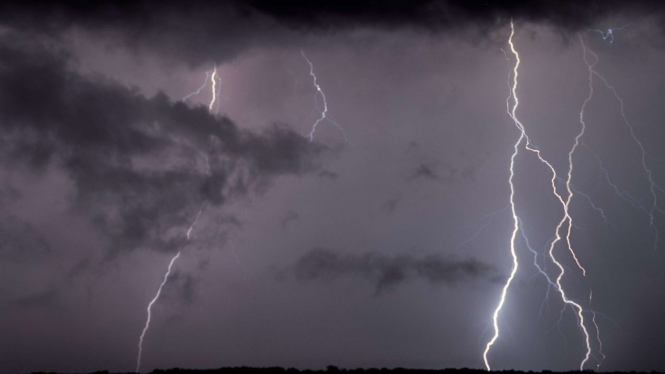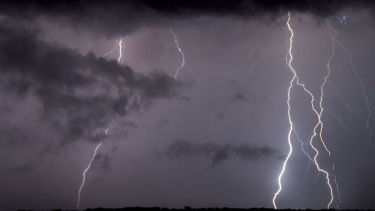Rainy Season, Know How Thunderstorm Form
- Fernando Flores/Wikimedia
VIVA – A thunderstorm is a weather condition or form caused by cumulonimbus (Cb) clouds. Thunderstorm is usually characterized by lightning and thunder. As reported from the official website of the Meteorology, Climatology, and Geophysics Agency (BMKG), the formation of thunderstorms can occur due to three things: water vapor, air instability, and air mass lifting mechanisms.
In thunderstorm conditions, the air is said to be unstable if it continues to rise when there is an upward push. An unstable air mass is characterized by hot, moist air near the surface and cold, dry air above it.
As the rising air mass cools, some of the water vapor will condense to form cumulonimbus (Cb) clouds, commonly called thunderstorms.
In general, thunderstorms require a triggering factor to develop. This factor is known as the initiating mechanism that gives rise to the upward movement of air masses. Temperatures in the lowermost layers of the atmosphere rise very quickly in the afternoon or evening because of the land heating and hot air will tend to move upwards.
Petir (ilustrasi)
- VIVA/Muhamad Solihin
Lifting can also be caused by the presence of fronts, especially cold fronts, and dry lines. Fronts are transitional places where different air masses meet.
In addition to fronts, the earth shape (terrain) can also cause airlifting, such as when airflow through mountainous areas, the wind will be forced up through the slopes of the mountains.
The Cycle of a Thunder Storm to Produce Rain
This thunderstorm cell has a special feature that its life cycle is only about 30 minutes. The life cycle of a thunderstorm can be described in the following stages.
1. At the towering cumulus (Cu) stage, a Cu cloud begins to grow vertically to a height of up to 6 km. The water mass inside displays updraft features with some turbulence flow occurring around the edge of the cloud.
2. By the time a thunderstorm reaches its mature stage, the cloud can grow to great heights, often reaching 12 km or more. Even at the top of thunderstorm clouds, it can reach the tropopause layer, a layer board where all elements of oxygen and carbon dioxide are no longer present.
As a result, rain is produced and the downward friction force is suppressed by the raindrops that fall around the airspace which produces a downdraft (air moving downward). Then the process of cooling the air mass because of raindrops will increase the speed of the downdraft.
The updraft and downdraft rates are relatively weak, around 10m/sec, and they can influence each other.
3. In the decay stage, rain will spread throughout the thunderstorm cloud and the downdraft becomes wider. The updraft weakens, the storm begins to run out of hot moist air supply as fuel, and finally the thunderstorm cloud will decay.
Light rain and wind can remain for a while at this stage, before all that is left is the cloud remnants of the anvil part of the cumulonimbus cloud.





























